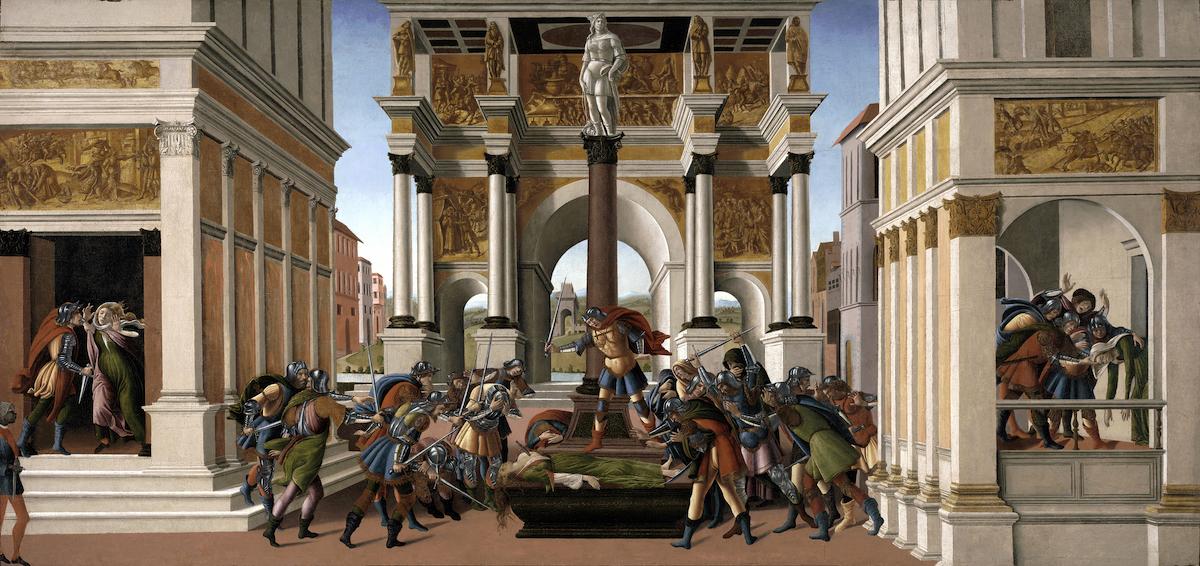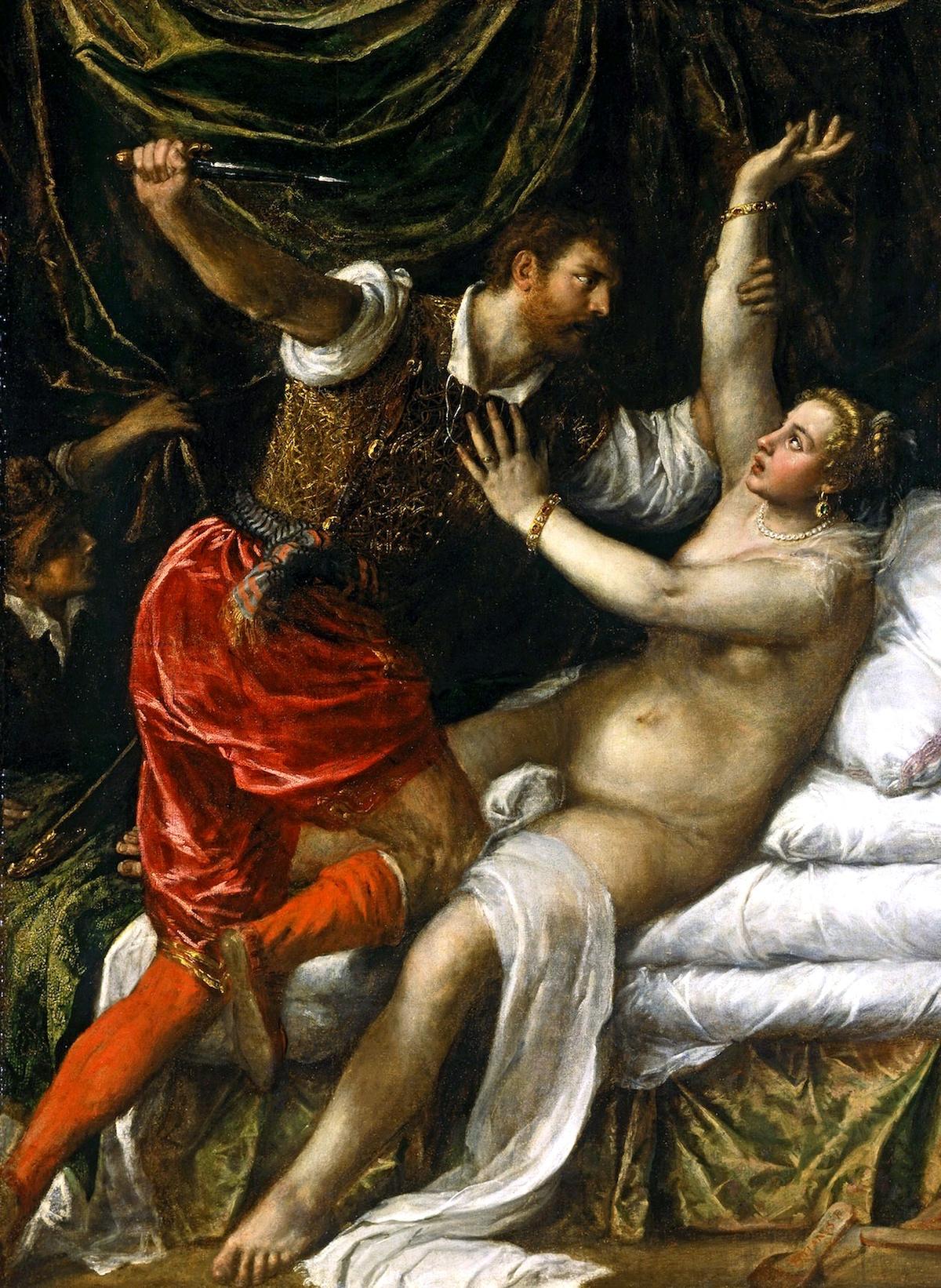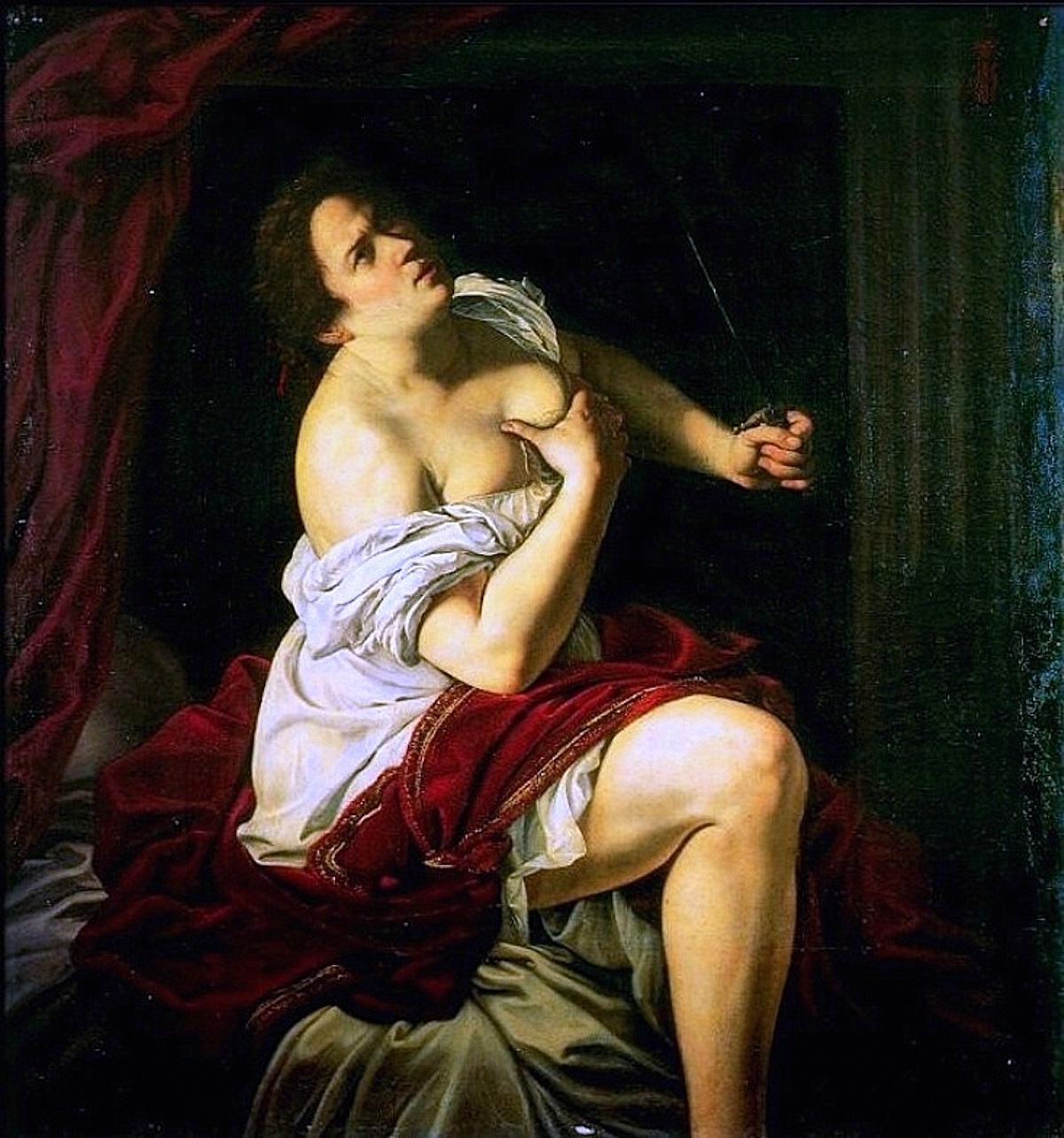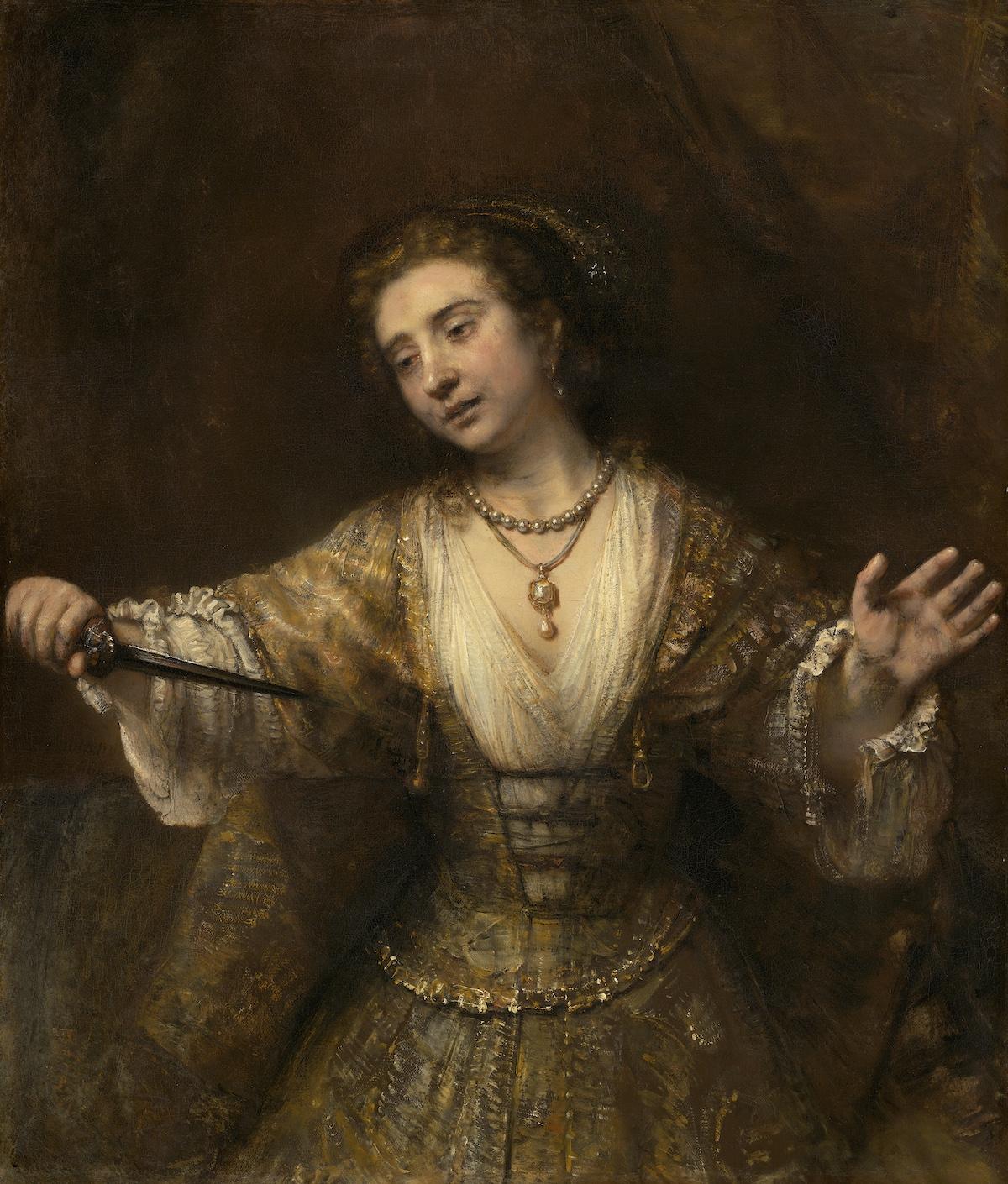While the weight of public freedom minimizes the trauma of Botticelli’s Lucretia, Titian’s interpretation bears no such social burdens. Tiziano Vecellio’s 1571 oil on canvas, Tarquin and Lucretia, terrorizes a domestic subject, whose nudity and dynamism emphasize the grotesqueness of rape. Unlike Botticelli’s panoramic and spiritually victorious heroine, this Lucretia remains frozen in an image of victimhood—yet her exposed flesh, jewelry, and unscathed coiffure contradict the violent scene’s realism. Titian beautifies brutality, exploiting history to bare female flesh, arousing the male gaze, and suppressing Lucretia’s survival and rhetoric prowess.
Most other artistic versions of the myth adopt Titian’s model: a starkly chromatic Tarquin intimidates a pale and hypersexualized Lucrece—frequently near a voyeuristic servant—in Tintoretto’s Tarquin and Lucretia (1570s), Felice Ficherelli’s Rape of Lucretia (1630s), and Giuseppe Maria Crespi’s Tarquin and Lucretia (1690s). These scenes eroticize sexual assault, commodify feminine virtue and neglect female Roman stoicism.




























